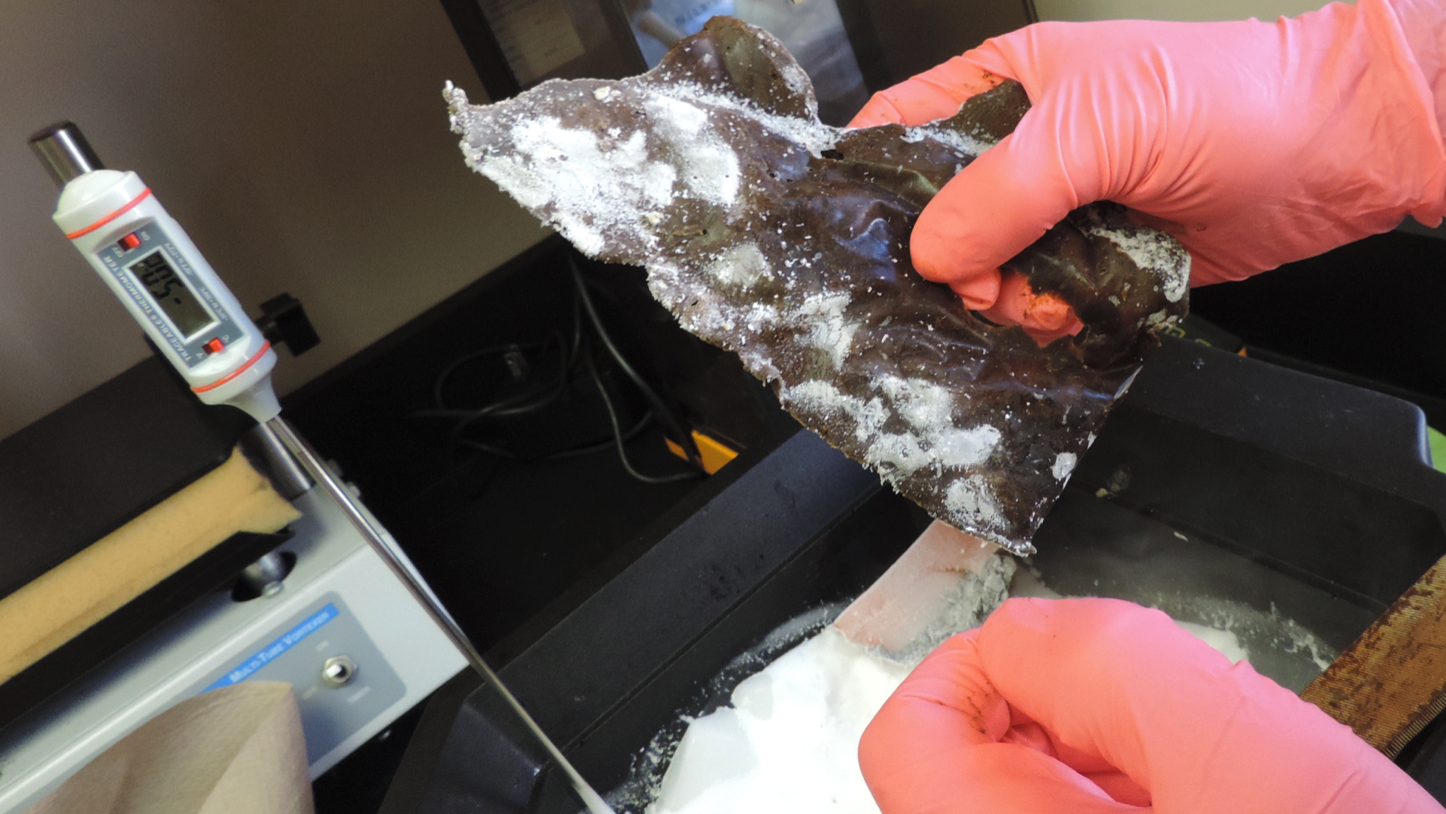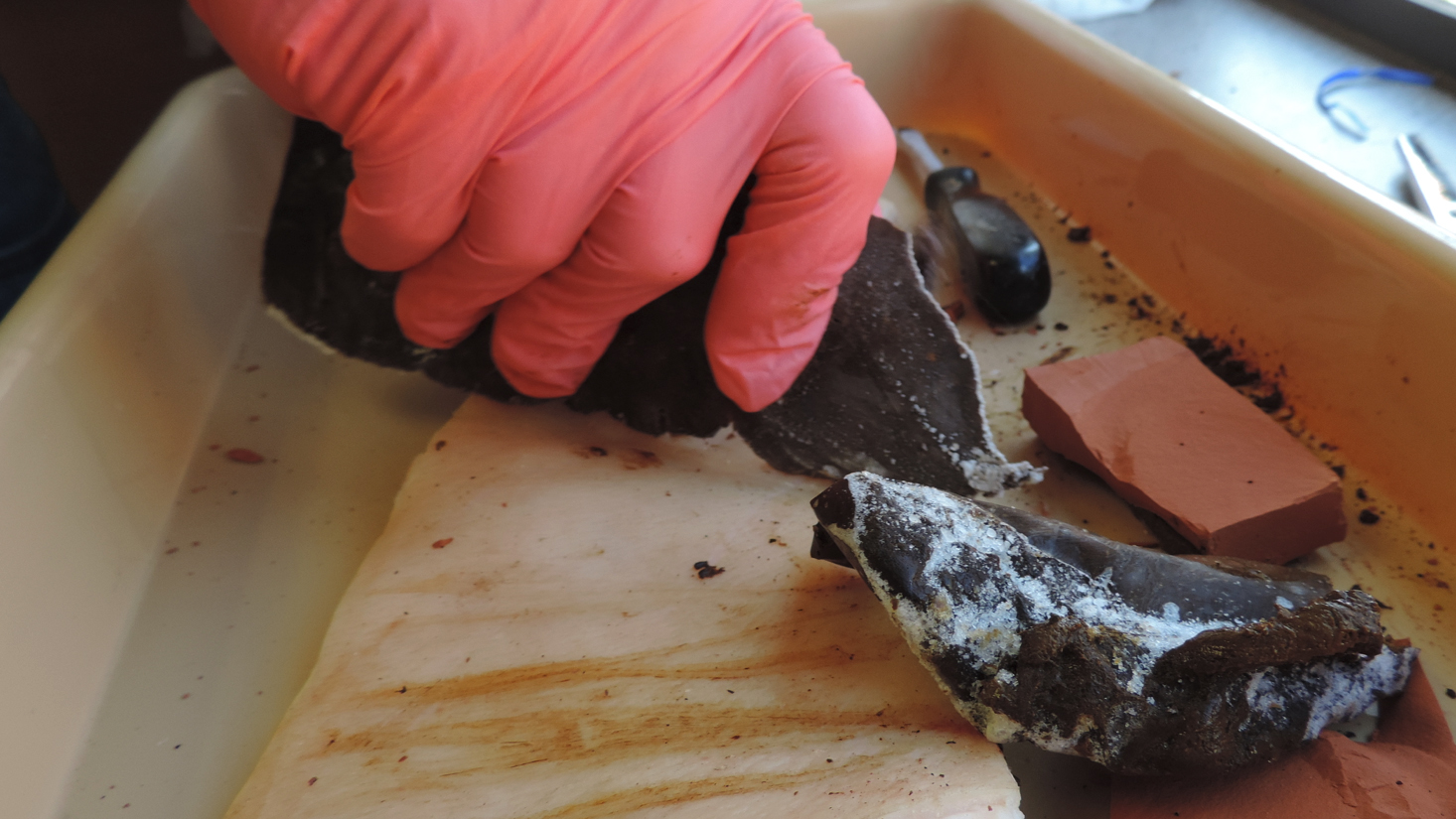What a Waste! Frozen Poop Knives Are Crappy Cutters, Scientists Find
"They were not functional," the researchers reported.

Scientists ponder a wide variety of probing questions in pursuit of knowledge. One of those questions — can a knife made of frozen feces cut flesh? — has just been answered.
An anthropologist reported in the 1990s that there was "a well-known account" of a stranded Inuit man crafting a knife from his own, frozen excrement that was sharp enough to kill and butcher a dog. The tale quickly spread through academic circles, its fame growing over the decades. But no evidence suggested that the incident ever took place or that such a blade would even be possible to shape or use.
That is, until now. A team of researchers in a laboratory that reverse-engineers ancient tools was intrigued by the story and decided to put it to the test. In the name of science, the lab's co-directors generated the experiments' raw materials and then crafted their own frozen poop knives, describing the process — and the disappointing outcome — in a new study.
Related: 11 Surprising Uses for Pee and Poop
In 1998, anthropologist and ethnobotanist Wade Davis published the book "Shadows in the Sun: Travels to Landscapes of Spirit and Desire." It included the remarkable account of an elderly Inuit man left alone during a freezing storm with no tools; he allegedly survived the ordeal by carving a knife from his frozen feces, "sharpened with a spray of saliva," Davis wrote.
Then, the man killed a dog with the knife, butchered the beast and "disappeared into the darkness" riding a sled that he made from the animal's rib cage.
Davis later said that he suspected the Inuit man who told him the story may have been toying with him. True or not, the story has since grown to become "one of the most popular ethnographic accounts of all time," according to the study.
Sign up for the Live Science daily newsletter now
Get the world’s most fascinating discoveries delivered straight to your inbox.
Real knife, or fake news?
When lead study author Metin Eren was still in high school, he heard Davis telling the story of the knife-wielding Inuit man on the radio; Erin told Live Science that the experience fueled his decision to become an anthropologist — he's currently an assistant professor at Kent State University in Ohio, and co-director of the university's Eren Laboratory of Experimental Archaeology.
It was in that lab where the next chapter of the poop-knife story unfolded. The dubious case of the frozen poop knife presented Eren with an intriguing subject for the lab's hands-on approach to unraveling how ancient tools work.
Given the current political climate, in which so-called alternative facts are alarmingly common and accusations of "fake news" are freely flung, "I thought it would be really important to do a project that tests some sort of urban legend, or something that is pervasive in the academic and public sphere that hasn't been well-tested and supported by experimental data," Eren said.
Related: In Photos — Human Skeleton Sheds Light on First Americans
Before conducting any experiments, Eren; co-author Michelle Bebber, also an anthropologist at Kent State; and their lab colleagues needed raw material for shaping the knives. Eren therefore adopted an eight-day "arctic diet" that was high in protein and fatty acids. His menu included lots of beef, turkey and salmon, with isolated helpings of applesauce, mac and cheese, and butternut squash risotto, according to the study.

By the fourth day, he was producing samples that were suitably "arctic" and usable in the experiments. The researchers froze the specimens to temperatures of minus 58 degrees Fahrenheit (minus 50 degrees Celsius), sharpening the poop blades with metal files and keeping them chilled with dry ice until they were ready to be tested on refrigerated pig hide.
"I was surprised at how hard human feces could get when frozen," Eren said. "I started to think, 'Oh my gosh, this might actually work!'"
But in the end, the poop knives simply didn't make the cut.
"Like a crayon, it just left brown streaks on the meat — no slices at all," he said.
Bebber then provided additional sample material of her own, but knives from the new poo fared no better.
"This idea that a person made a knife out of their own frozen feces — experimentally, it is not supported," Eren said.
Though the experiments demonstrated that a blade made of frozen waste couldn't carve flesh — or even penetrate it — the researchers' efforts were far from wasted, Eren said.
"Data is key, and really, that's where this study is meant to draw the reader. Science is about describing and explaining reality. Especially in this day of alternative facts and fake news, evidence needs to come back to the fore."
The findings were published online in the October issue of the open access Journal of Archaeological Science: Reports.
- Mad Geniuses: 10 Odd Tales About Famous Scientists
- The Coldest Places on Earth
- How Much Do You Poop in Your Lifetime?
Originally published on Live Science.

Mindy Weisberger is an editor at Scholastic and a former Live Science channel editor and senior writer. She has reported on general science, covering climate change, paleontology, biology and space. Mindy studied film at Columbia University; prior to Live Science she produced, wrote and directed media for the American Museum of Natural History in New York City. Her videos about dinosaurs, astrophysics, biodiversity and evolution appear in museums and science centers worldwide, earning awards such as the CINE Golden Eagle and the Communicator Award of Excellence. Her writing has also appeared in Scientific American, The Washington Post and How It Works Magazine. Her book "Rise of the Zombie Bugs: The Surprising Science of Parasitic Mind Control" will be published in spring 2025 by Johns Hopkins University Press.










